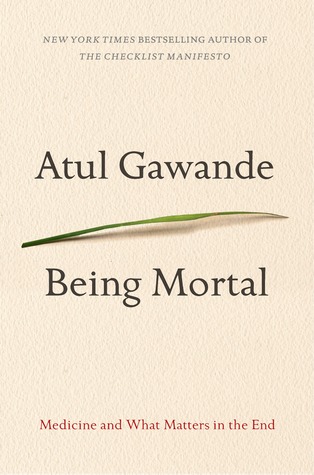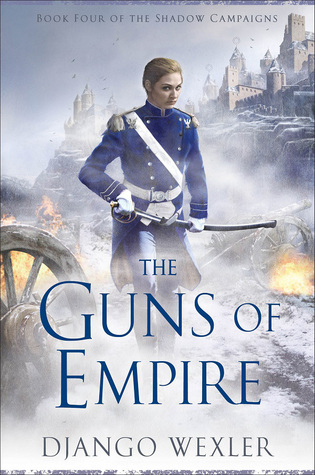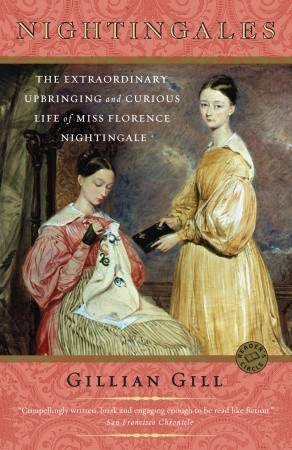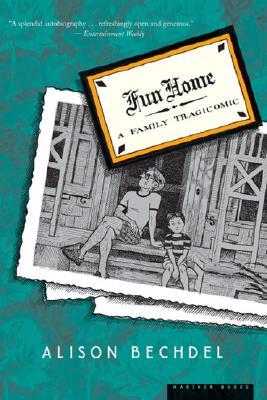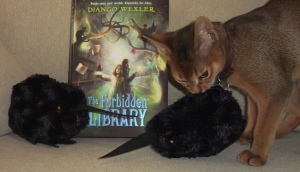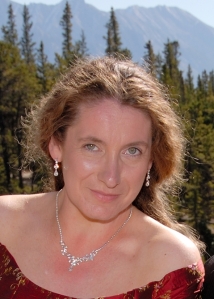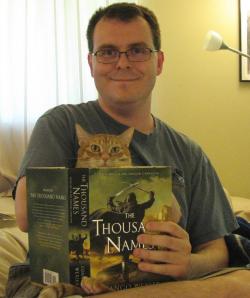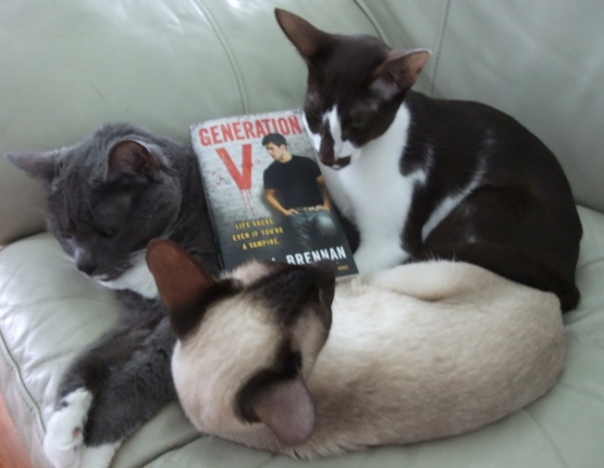Blog Archives
Top Ten Books 2014, January – June
Good news on the writing front! Tainted Blood copy edits came back, and I went through them line by line. If you happen to follow my Twitter feed, believe me, that involved a whole lot of profanity. Plus some appeals to the Twitter hive mind, and the ever-popular “too gross?” checks. (those have left me with the following conclusion: there are two kinds of people in the world. Those who find poop jokes hilarious, and those who lack all sense of humor. Just a warning – there are poop jokes in Tainted Blood. AWESOME poop jokes.) Now the manuscript passes to the typesetter, and the next time I see it will be when I get the page proofs. So it’s making steady progress toward that November release date!
I’m in the process of re-organizing my office space. I’ve finally decided that I have outgrown the Walmart special desk (that is actually not a joke – I bought it when I was in grad school, and the budget was TIGHT back then) that I wrote the first three Fort Scott books on, and I’m upgrading to an L-desk that will offer about 2/3rds more room. Best of all, there will be room to not only type at the keyboard, but also slide my chair over and work longhand. While I’m at it, I’m also painting the office and finally putting up some pictures. Once this is done, I’ll start breaking ground on Fort Scott #4, which I am now officially contracted for. (the contract arrived yesterday with all the signatures! There is now no escape possible for Roc! Mwa ha ha ha!)
On to actual content.
According to my Goodreads account (which, can I just say how much I love that thing? Statistics make me happy – it’s why when I’m working on a book, I keep track of my daily wordcount), I’ve read 47 books so far this year. Let me tell you – it’s been a lot of fun. But as I stand here (or, rather, sit here) at the midpoint of the year, I have to admit – some of those books stunk, a lot were fantastic, but a few were ABSOLUTELY FUCKING AWESOME AND YOU SHOULD READ THEM NOW.
 1. The Shadow Throne by Django Wexler
1. The Shadow Throne by Django Wexler
This comes out July 1, but I got an ARC from Django. You might be asking yourself – wait, she got an ARC from the author, who she is also referring to by first name? Is this a case of that rampant authorial nepotism that I hear about?
I will neither confirm nor deny this.
BUT, seriously, I love this series to death. The first book was one of my favorites last year, and I was really looking forward to the sequel. It’s pretty fabulous – imagine a Victor Hugo novel (yes, THAT one – with the musical), but flintlock-fantasy style. Oh, and for those of you who are looking for a fantasy book with a great range of female characters – look no further. It’s here.
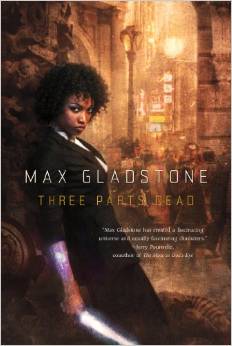 2. Three Parts Dead by Max Gladstone
2. Three Parts Dead by Max Gladstone
I was at VeriCon this year with Max Gladstone, and here’s the thing about being on multiple panels with other authors – you hear the elevator pitch for their novel about 50,000 times. (Max could probably mention all the bullet-point selling items for Generation V from memory) Now, if you’re highly susceptible to advertising, like I am, this usually means that you have to buy the damn thing. However, I’m really glad that I did this, because this book is INCREDIBLE. It’s actually as good as the cover – how often does that happen?
I also read the sequel, which equally rocked my world (book moral: bros before hos, fathers, bosses, and gods), but I made the executive decision that there would be no double entries.
3. Dust by Elizabeth Bear
Angels, a generation ship, a basilisk named Gavin who is also a laser-cutter, medievalism meeting high tech, and copious incest. Very, very cool.
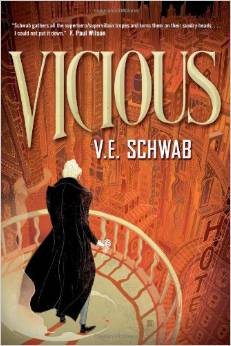 4. Vicious by V. E. Schwab
4. Vicious by V. E. Schwab
Every superhero/supervillain trope ever is beautifully and mind-blowingly subverted in this book. Great characterization and a great out-of-order construction that gives this a great puzzle feeling. Fabulous payoff, too. I picked this up because everyone on my Twitter feed was going crazy over it, and THEY WERE RIGHT.
5. Fun Home by Alison Bechdel
The textbook I was using for one of my classes in the spring semester had a really neat section on the graphic novel, and while I didn’t quite figure out a way to shoe-horn it into the official syllabus I did read an excerpt from FUN HOME, and I had to immediately order the whole book. It’s a fascinating and beautifully presented memoir of the author’s childhood and family, really considering the ideas of identity and sexuality. So worth checking out if you haven’t read it yet.
6. Murder of Crows by Anne Bishop
Sequels are tough when you really loved the original. Hopes get really high, and it’s unlikely for the sequel to live up to it. I’m really enjoying Anne Bishop’s foray into alternate-world urban fantasy, and the sequel really worked for me. I’ve had a pretty good six months with sequels, actually. Obviously, there’s my own sequel (REQUISITE PLUG AND SELF-BRAG), but I read a bunch that I really liked. I think the only one that just didn’t really do much for me was Sharon Shinn’s Royal Airs – though I still think that the first in that series, Troubled Waters, was utterly perfect.
 7. The Tenant of Wildfell Hall by Anne Bronte
7. The Tenant of Wildfell Hall by Anne Bronte
No, seriously.
I’ve done my time in the English Department gulag, so I thought that I’d really had my fill of Brontes. I mean, not that I don’t like them. Wuthering Heights is pretty delightfully fucked up, and Jane Eyre is basically requisite reading given how often writers feel compelled to either rip it off or give it an homage (fact: best Jane Eyre homage EVER is Jenna Starborn by Sharon Shinn – it’s not just a copy & paste of basic story elements, but actually pays attention to the goddamn themes). But I didn’t really feel the need to complete my Bronte trifecta, feeling that I’d pretty much gotten the idea.
I was wrong. Anne is the badass Bronte sister. She’s all gritty realism! Feminism! Belief in redemption! I mean, her sister Charlotte outright refused to let Tenant of Wildfell Hall be republished during her lifetime because of how controversial her sister’s book is. Yes, the book is told in epistolary form, which normally makes me shudder, but it’s worth it.
Okay, and I also watched the BBC film version before I read it, which got my interest going. But – worth it!
 8. The Radiant Seas by Catherine Asaro
8. The Radiant Seas by Catherine Asaro
Plus the other 12 books in this series that I read since January. I really love this series, and now I’m suffering withdrawal – the bummer of tearing through a series in three months that have taken the author just under twenty years to write. Plus side, according to Asaro’s website, she’s got Plans.
Most of the books in the series can be read individually – there is only one cliffhangered book, and that one is pretty overtly labeled Part One. If you read them in publication order there’s also this neat thing where Asaro skips all around in her own timeline. In some books they’ll refer to this big war that occurred years ago, and in later books the setting IS that war.
Now, I read the series in publication order, which begins with Primary Inversion. But if you’re interested in reading it in chronological order, start with Skyfall. What I’d love to be able to do is dump my memories of this series and try it in chronological order, then get my other memories back and compare.
9. Dead Things by Stephen Blackmoore
LA noir with necromancy. It’s pretty awesome. The sequel comes out in August, too, so you won’t have to wait too long to find out what’s next for Eric Carter.
 10. Beggars In Spain by Nancy Kress
10. Beggars In Spain by Nancy Kress
This is one of those sci-fi books that utterly blows you away with the setup, the payout, and the insight into humanity. It’s also one of those books that will leave you completely depressed because of its insights – but it’s so good that you have to read more. Kress reminds me of Sherri S. Tepper in that way. Well worth checking out.
So that’s my Top Ten since January. What’s yours?
The Forbidden Library, Silver & Salt, plus Tainted Blood news
So today is a hugely great day! I mean, not particularly for wallets, but great for brains. Because today is my friend Django Wexler’s book birthday! The Forbidden Library is available for purchase everywhere – now, Django is probably best known for his incredibly epic flintlock fantasy, as well as his inability to say no when I come up with a blog idea, but he will soon be also known for incredible middle-grade fantasy.
I don’t read a lot of children’s literature – I mean, beyond Harry Potter or A Series of Unfortunate Events, which, do those even really count? – but I read The Forbidden Library ARC back in June. Mostly it was because Django is my buddy, and because he promised that cats would be involved. So I might’ve started that book out of nepotism and the desire for literary LOLcats, but that is not why I stayed up all damn night reading that book. Seriously, this is SO DAMN GOOD. I wish that I could use a time machine to go back and hand it to my eleven-year-old self, because I wish I could’ve grown up with this one in my head alongside Narnia. But at the same time, it’s just honestly good, and I’m itching for #2.
Written for kids? Yes, and it will blow their minds. But at the same time, this completely holds up for an adult reader due to the nuanced characters and some extremely tricky and complex themes. Buy it, read it, love it, finally get all my references to The Swarm. (then nag your library into investing in a copy)
I usually have a lot of books and authors I list off when people ask me about what my literary influences were when it came to writing the Fort Scott books. I mean, I kind of wish I could just upload a few pictures of the contents of my bookshelves. But one influence that I absolutely cannot underemphasize was Rob Thurman’s Cal Leandros series – particularly the first book, Nightlife. The grit of it, the humor, the complete nightmare re-imagining of elves, and the emotional messiness – I just love that damn book. I also love Rob Thurman – I must have at least a dozen of her books scattered all over my house, most pretty banged up.
So I’m guessing that I’m not alone in the Thurman fandom, so that’s why you should like this – Rob Thurman has put together a Cal Leandros anthology. Two shorts that appeared in previous anthologies, one short that was previously online, and one entirely brand-new short story. Available in Kindle, paperback, and also on her website! Go snag a copy – Rob Thurman is trying out the Barb Hendee model and dipping her toe in self-publishing, so if she gets a good response out of this, we’re all likely to see a lot more of this kind of thing from her.
That’s news about my friends – now how about some Fort Scott stuff? Tainted Blood has an Amazon page! There’s also a definite pub date – November 4, 2014 should now be seared into your calendars. Finally, here’s the back cover copy – read and enjoy!
In the third Generation V novel, Fortitude Scott proves that working with family can be deadly…
Former film student Fortitude Scott is finally gainfully employed. Unfortunately, said employment happens to be with a group of sociopathic vampires—his family. And as much as Fort is loath to get too deep into the family business, when his brother, Chivalry, is temporarily unable to run the territory, it’s up to Fort to keep things under control.
So when the leader of a powerful faction of shifters turns up murdered, Fort finds himself tracking down a killer while navigating dangerous rivalries, longtime grudges, and hidden agendas. Even with the help of his foxy kitsune sidekick, Suzume, he’ll need to pull out all the stops to hunt for the paranormal assassin.
But as he calls on fairies, witches, and ghouls for help, he discovers that the problem is much bigger than a single dead werebear. The supernatural community is preparing for a massive shift in power within the Scott family leadership—and Fort has landed right in the middle of the gathering storm.…
NYCC 2013

Okay, so here’s part of the NYCC showroom floor. Now imagine trying to meet up with a friend. It’s okay if you want to cry in a corner at the thought, but just remember – the corners are all full of people. You’ll have to wait your turn.
Here’s the thing about New York Comic Con – it’s BIG. Everyone had told me that before, but it’s hard to really wrap your brain around what 100,000 people all converging on one space really means. That’s about eight times the size of the town I live in – and it’s HUGE. I tried to go to the bathroom at the convention once. Then I saw the line and decided to hold it. Just trying to go up an escalator is a challenge – you’re moving through just a sea of humanity, with different currents all around you. And on top of that, every three steps you see something so amazing that you want to stop and check it out – usually along the lines of some incredible cosplay – so there are constant traffic jams while everyone admires a costume or takes a picture.
That’s just the entryway – then there’s the showroom, which has SO MUCH stuff – every time I went through it, I saw a new booth with incredible stuff. I think my favorite discovery was when Django Wexler and I were trying to find the popcorn booth (om nom) and bumped into the Geek Chic That was some of the most amazing furniture I’d ever seen, and I now sincerely covet one of their customized gaming tables. I also now know what Django’s first purchase will probably be if his Forbidden Library series becomes the next Harry Potter. (which it really ought to, because I love it)
Then there was Artist’s Alley, which was packed with amazing talent, beautiful artwork, and more hordes of people. (I bought one amazing poster from Sara Richard for my home office – guess which one?) There were also the panels, which filled up really fast, so if you wanted to go to one (and these weren’t the TV ones, either) you had to line up about half an hour early. Plus there was the autographing section, which honestly terrified me. So while I really would’ve liked to meet Felicia Day, the line scared me off.
Then there’s the best part of the con – meeting people! I got to meet up with lots of people who I’d already met at other cons, plus lots of new people! It was fantastic. The first thing I got to do was at the Penguin booth, where Myke Cole, Benedict Jacka, and I were signing copies of our books. Now, I thought that this meant that we’d be kind of hand-selling a little, maybe meeting some people who had brought their copies. Oh no – that’s not how Penguin rolls. The first hundred people who lined up at the booth got free copies of each of our books, that we would then sign. It was SO COOL.

That’s the start of the line, brilliantly played by my friend Rob. Rachel is right behind him. If you want to learn how to come home from a convention with sixty-five free books, learn from the masters, grasshopper. Photo generously provided by Richard Shealy, SFWA-registered copyeditor
It was a lot of fun meeting so many excited readers, and all of whom now had shiny copies of Generation V for me to sign! Hopefully people really enjoyed reading it, and also will then post reviews to Amazon and Goodreads. (hint. hint.)
This is what it looked like to be on the author side of the booth – lots of people, and Myke Cole’s derriere, preserved for posterity.

There was this weird feeling that we were being observed at all times… Photo generously provided by Richard Shealy, SFWA-registered copyeditor and giant eyeball.
I was going to lunch with Django right afterwards, so here’s a picture of all of us – and Myke couldn’t resist pretending to write on Benedict’s face. (probably: “For incredible British cheekbones, see above”) You can also see Django making sure that his model Swarmer from The Forbidden Library made it into the photo.

Photo generously provided by Richard Shealy, SFWA-registered copyeditor, and the time-honored tradition of tormenting British people. Benedict’s thought-bubble should be: “Cursed colonials.”
But Benedict ended up going to lunch with us, so all was forgiven. He also did me a huge solid late that night of helping me navigate the subway back to Forest Hills, where I was staying with family. Now, if you’re a New Yorker, you might be saying to yourself – “Manhattan to Forest Hills? That’s stupid-easy – get on either the E or the F and it takes you straight there.” And, valid point. Except for the part where my powers of navigation are so horrendous that I routinely (routinely!) get lost in parking garages. And just to find my car again in parking garages, I usually draw a little pirate map for myself. It takes me a long time to orient myself to areas enough to just find my way along a regular route comfortably, and as for making logical variations on that route? Such as, “Well, if I’ve been getting on the E train at 34th Street, why not just pick it up further down the line?” – yeah, that takes a while. (my navigation was so insanely shitty the second night that Django Wexler actually asked how much I’d had to drink – three sodas. Epic fail.)
The next day was the Geek Geek Revolution panel – very fun! It was me, Django, Myke, Anton Strout, Andrea Cremer aka A. D. Robertson, and Alex London. (Mia Garcia did a fantastic job as moderator, but I unfortunately don’t have a picture of her)

And there we all are! The loser of the contest had to wear the Jar Jar mask of shame. Sorry, Alex. But Myke was pretty intent on not losing. Photo generously provided by Richard Shealy, SFWA-registered copyeditor.
Other highlights include an absolutely delightful author dinner where Diana Rowland made me laugh so hard I nearly fell out of my chair. So a really fun convention! I’m bummed that I won’t be able to attend NYCC next year, but one of my best friends has decided to get married that weekend, and since I’m in the bridal party, I’ll be somewhat busy. This was my last con of 2013, and I really had such an amazing time at all three that I attended. I’m putting together my list of cons that I’m hoping to attend in 2014 – mostly drivable within the New England/Tri-State area, but I’ll probably do one travel con. I’m giving serious consideration to DragonCon, so I’ll post my con schedule when I have it.
In other news – this is the release day of my friend Matthew Quinn Martin’s debut urban fantasy/horror novel, Nightlife! So definitely go check it out! Fun fact, Matthew and I used to teach at the same college, and we shared office space. We got very little actual work done, but we did have a fantastic time talking about writing and constructing monsters. I have it on excellent authority that Matthew’s take on vampires is nightmare-worthy.
The State of Monday – July 1
Welcome to July (also known as, “shit, how is it July already?”)! Last week was pretty good for the writing. I had a very useful phone conversation with my editor (the great and powerful Anne Sowards) in the middle of the week.

Maybe it’s a little bit of a power move that she insists on using this thing whenever she talks with me, but, hey, whatever works.
We talked about where I’m planning on taking Book 3. This was a pretty important phone call, since when Roc bought the three books, the purchases on #2 and #3 were based on a set of proposals, plus an over-series arc document. Iron Night is similar in most major points to its proposal, but the problem is that there are a few really BIG events that were in the Book 3 proposal that I just didn’t feel should happen yet. They needed more prep before I could get to them.

How big are these events? Well, about as big as the giant balloon that Anne Sowards does all of her business travel in. It’s slow, but she gets great mileage.
Anne agreed with me, and I had a really productive week of outlining. I’ve cleared up one of the thornier areas of the main plot, and now I’m just figuring out how some of the ongoing plots will fit in around it. The timing is going really well on this, since on Saturday I’ll be heading down to one of my favorite places in the world for a six-day solo vacation – can you guess the place?
Newport, RI. My family starting going down for a week every summer when I was about 4, and I actually lived there for a full year on my own. Newport is both one of my favorite settings in the Fortitude Scott books and a really important place in its creation. I finished the first draft of Generation V in Newport in the summer of 2011. In the summer of 2012, I’d just sold the series to Roc, and I thrashed out the full outline of Iron Night during my time there. This summer I’m hoping to get a chunk of writing done on Book 3.
My schedule in Newport is pretty basic – I get up in the morning, eat breakfast and read on the porch. Then I come inside and write for a few hours, breaking for lunch. In the early afternoon I take a break and head down to the town – I walk all over, looking in shops, checking out what has changed, until I’m exhausted and sweaty. Early dinner at the Newport Creamery (greasy spoon diner and decent eating for a writer on a budget – plus, Awful Awfuls!), then back to the keyboard. Time out on the porch to enjoy the sunset. Work until I’m tired, then to bed. Repeat until vacation is over.
It’s wonderful – though my brother usually calls me a few times to make sure I haven’t gone all The Shining on my own.
This year I’ll be leaving Newport on a Friday – the same Friday as my first convention! I’m really excited to be attending ConnectiCon – I’m on two panels, plus I’m going to get a chance to sign copies of Generation V! Plus I also get to attend a convention – yay! If you’re planning on attending ConnectiCon, drop me a note so that we can meet up!
So that’s what’s going on with me (and why there won’t be a State of Monday next week), on to the important stuff – what’s going on with the books! Firstly, Generation V is up to 22 reviews over at Amazon. Amazon also has a new format which I’m not especially thrilled about – I find it really visually annoying, and it kind of pisses me off to have to click on something to see basic book info like where something was published. But, hey, I guess when I’m a global conglomerate with billions in assets, I can complain then, right?
Two really great reviews of Generation V – one from Kristin over at My Bookish Ways, and the other that I found over at bookistry. Also, Candace from Candace’s Book Blog is having a guest post and giveaway extravaganza, and she was nice enough to ask me to add a post. I had a lot of fun doing it, so check out My Top Ten Favorite Books So Far This Year — because, really, I’ve never been able to do a Top Ten list of favorite books of all time. I remember getting really frustrated over that once back in 8th grade, and let me tell you, I’ve read a *shit-ton* of books since then. It’s not getting any easier. But favorite books read in a six month period? That I could get a fun handle on. Oh, and you should also check out my list because Candace is running a giveaway of a signed copy of Generation V. So, free stuff!
I’ll be guest blogging tomorrow at That’s What I’m Talking About for their Urban Fantasy Summer Reading Celebration ) — they have a pretty great lineup of books to raffle off, and they’ll also be talking about some of my favorite authors.
Speaking of summer fun – check out the Blogger Summer Circus Giveaway Hop. There are a lot of great blogs involved, but start off at one I like very much – Danielle at Coffee and Characters is the ringmaster, and she also has a lineup of cover reveals, and I’m *very* flattered that she included Iron Night as one that she’s really looking forward to! Believe me, I’m *dying* to find out what people think of it, and January feels like forever and a day, but it’s with the copyeditor now, who will no doubt point out about fifty problems that I was completely unaware of. (last time favorites included the fact that the gun Fort was using held about four more bullets than I thought it did – so the final version ended up with four more shots to explain how he emptied his gun)
Speaking of the Iron Night cover….
…it was included in the All Things Urban Fantasy Cover Art Coverage! They had 36 covers to get through (whoa!) but were nice enough to include Iron Night. The entry is worth checking out on its own (I love reading their cover art posts), but here’s what was said about Iron Night:
Chris says:
The covers for this series suck. A lot. They’re boring as all get out. That’s especially sad since this is a tremendous series.
Did you hear that? Chris says that this is a “tremendous series”! Woo!
Kristina says:
While I will always applaud sensible clothes and just plain clothes on a model this is kind of boring. He looks like he’s just taking a stroll with his gun.
“Taking a stroll with his gun” would be the best kickoff to an animated Disney song EVER! (wait, didn’t that already happen in Pocahontas?) But, yes, I am continually relieved at Fort’s state of dress on these covers – ie, his commitment to wearing shirts. Actually, this cover got even safer, since he now has a tee *and* a long-sleeve shirt! That’s smart layering, Fort!
Jennifer says:
The V in the background is why I’m giving this cover the middle. My interest is peaked by it alone.
I’m a huge fan of that background V. Yes, it has flummoxed a few people, since the official series name is American Vampire, not Generation V, but I was seriously worried around title time that my series didn’t have themed titles, and I think that the artist did a fantastic job of using that V to tie them together. Bravo!
Fun side story – I was on the phone with my brother last night, and I asked what he thought of the new cover. Typical brother, he didn’t even know I *had* a website (right on the book! Argh!), but it turned out to be a win, since then I got to listen in realtime to his cover reaction! (once he scrolled past last week’s fluffy dog – not my cover, btw). It was hysterically funny, and I wrote it down to share with all of you:
My Brother says:
WHAT? He went from film theory geek to Die Hard! And why is he carrying a sawed-off shotgun?!
I’m going to call that a thumbs up.
That’s about it – but remember that tomorrow is the debut of Django Wexler’s The Thousand Names (#5 on my list of books I read this year, btw). According to SF Signal:
I would wholeheartedly recommend The Thousand Names, not only to fans of fantasy but also to fans of military fiction of all types. Fans of Steven Erikson, David Drake, Glen Cook, Naomi Novik, Tom Kratman, Jack Campbell, David Weber, and John Ringo take note – there’s a new military fiction cowboy in town and his name is Django.
And if you’re buying The Thousand Names, why not take the opportunity to pick up Generation V as well?



